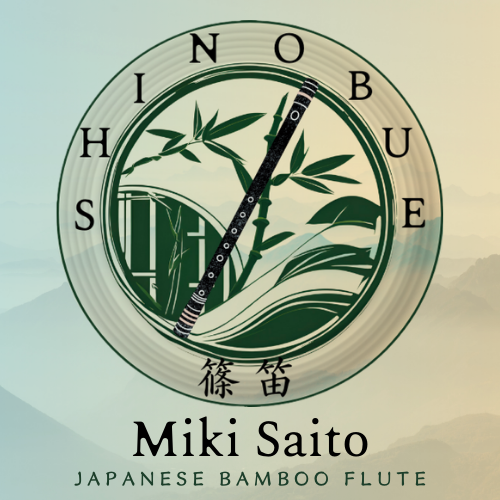Quickly and easily master the shinobue with these practice tips!!
Learning to play an instrument requires a lot of practice, but our busy lives can make it challenging. That's why it's essential to know how to practice effectively to improve quickly and easily. Having learned to play multiple instruments and taught thousands of students, I have discovered proven methods to make the most of your valuable practice time.
Practice for short periods of 1 to 5 minutes every day.
Don't go to sleep without playing shinobue, even if it's just for one minute. Picking up a shinobue and trying to find a beautiful tone without any warm-up is an excellent exercise. Practice this multiple times a day, every day. When you have more time, spend a larger chunk of time with the shinobue, but practicing every day is key.
If you work from home, keep your shinobue on your desk.
Work, get tired, pick up your shinobue, and play for one minute. Find that your mind is refreshed. Repeat.
If you work in an office, bring your shinobue with you.
Find a private place to practice during lunch. Does your workplace have a rooftop? I used to go to my car to practice. If the weather is nice, you can also practice outside. Consider driving to a nearby park to get some fresh air and practice ryo on 1. Since ryo on 1 is quite quiet, you won't attract much attention.
Keep a plastic shinobue in your car.
Please approach this with caution and common sense. If you find yourself stuck in traffic, pick up your shinobue to practice making sounds. Many people keep a Suzuki shinobue in their car so that they can easily take it out and play whenever a random opportunity arises. You should NEVER leave your bamboo shinobue in the car, as it may get damaged; however, the Suzuki plastic shinobue is very durable!
Print your sheet music.
While I wholeheartedly support environmental sustainability, I find that printing my sheet music remains a valuable practice. It can be quite challenging to locate digital files when preparing to practice, especially with distractions like notifications and small text on screens. Having physical copies allows for a more seamless and focused practice experience.
Most importantly, digital formats make it difficult to write down notes like where to breathe or reminders to engage your core muscles during play. This can hinder your ability to retain what you practice. As a shinobue player, I am very specific about my sheet music because it's crucial for my performance. Unless you're skilled at using a tablet with an electronic pen, it's essential to be particular about how you take notes. I prefer a mechanical pencil with 0.9 mm lead and a Staedtler eraser.
Clear and legible sheet music is a must, as the music won't wait for you; you need to read it instantly while playing.
If you would like to support this newsletter, please visit my Amazon storefront, where the eraser and mechanical pencils are listed under "Learning Tools."
Instead of practicing the entire song, focus on a specific problem area and practice that section repeatedly.
Practicing the whole song over and over is a waste of time. Instead, identify the problem area and study it.
A lot of shinobue practice involves problem-solving.
Analyze the piece. Analyze your body. Analyze your fingering. Why are you having a problem in this area, and how can you solve it? Use your mind. Use your creativity.
